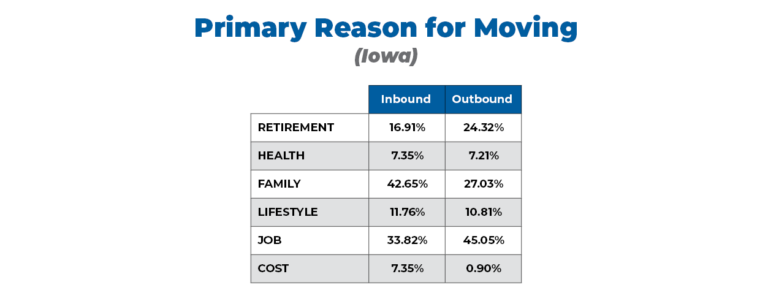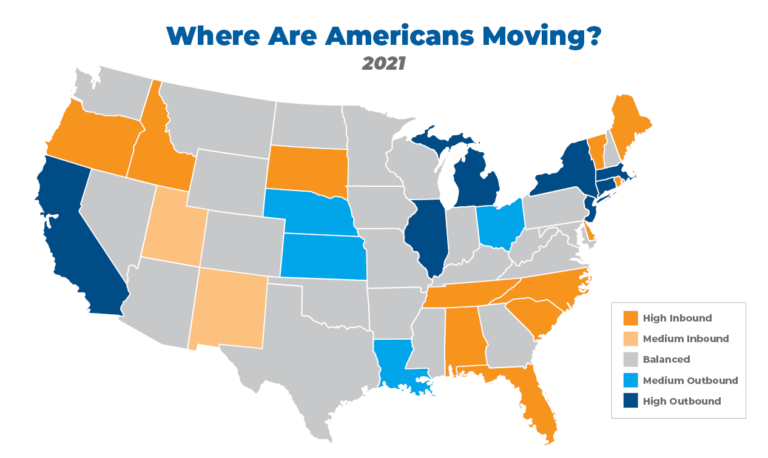
By Sarah Curry, DBA
Do you ever get together with friends and instead of socializing about normal topics, you get thrown into a conversation about taxes? Well, that is exactly what happened to me the other day. Admittedly, having spent most of my career in public policy, it happens to me a lot. This time, however, I wasn’t the one who started it.
Many people will tell you taxes don’t matter and people choose to live somewhere based on other factors, like the weather or proximity to family. While a lot of that is true, when taxes reach a certain point they can cause people to alter their behavior. Have you heard of voting with your feet? Here’s how that exact concept is playing out for two Iowa families.
The first family includes a wife who runs an in-home daycare. She and her husband had been searching for a bigger home to accommodate their growing family. Unfortunately, due to home values and property taxes, they had to leave their hometown and are now buying a home in a smaller town ten miles away. While the distance doesn’t seem like a significant move, she lost almost all of her daycare families and her own children will have to go to a different school.
Another family recently moved to Iowa from Nebraska because it was no longer affordable to continue living under Omaha’s heavy tax burden. Buying a home in Iowa offered that family a measure of tax relief while still allowing them to keep their current jobs. While homes are a bit more affordable here on the east side of the Missouri River, property taxes still pack quite a punch. When researching cost of living, they mentioned that Missouri offered more affordable property taxes than Iowa, but a commute from Missouri to Omaha isn’t feasible. They ultimately bought a home in Iowa, albeit a smaller one than they desired because they needed to afford the mortgage AND property taxes.
There is nothing scientific about these two anecdotes. We can’t create a pie chart or a bar graph to illustrate what these families experienced. But we can all relate to the fact that things can simply get to a point where they are too expensive, even if that thing is a home and its property tax bill. Both of these Iowa families had to make choices that prioritized their family budget, even when it meant doing without something they wanted. For one family, that meant leaving their hometown. For the other, it meant downsizing their home. As Iowans bear the cost of increasing property tax bills, many of them wish their local leaders would similarly find ways to do without all the things they really want in their municipal budgets.
These stories are not unique, yet they help provide insight into why people move. Lots of surveys document the reason for moving, but one interesting one is the United Van Lines mover’s survey, which tracks the company’s data for state-to-state migration patterns.
For Iowa, the total inbound migration was 49.5% while total outbound was 50.5%. The primary reason for moving to Iowa in 2021 was family, followed by jobs and retirement. The main reason for leaving Iowa was jobs, followed by family and retirement, making it difficult to draw a definitive conclusion.

Source: United Van Lines
While Iowa’s migration pattern was balanced, what’s interesting is three of our neighboring states (and Kansas) made the top ten list. South Dakota was 2nd nationwide for most inbound migration according to the survey while Nebraska and Illinois were in the top ten for moving out. When looking at these states specifically, it’s hard not to notice the starkly different tax situations. Illinois and Nebraska are high tax states while South Dakota is a low tax state. Luckily, Iowa is on its way to being a low tax state thanks to the tax reform legislation enacted this year.

Source: United Van Lines
Public policy can’t change where people’s families live or the weather, but it can change how affordable retirement is or what types of jobs are available. Changing the tax structure in Iowa was the first step at making the state a better place to live. Now it’s time to tackle other challenges like workforce, property tax, and heavy regulations.
